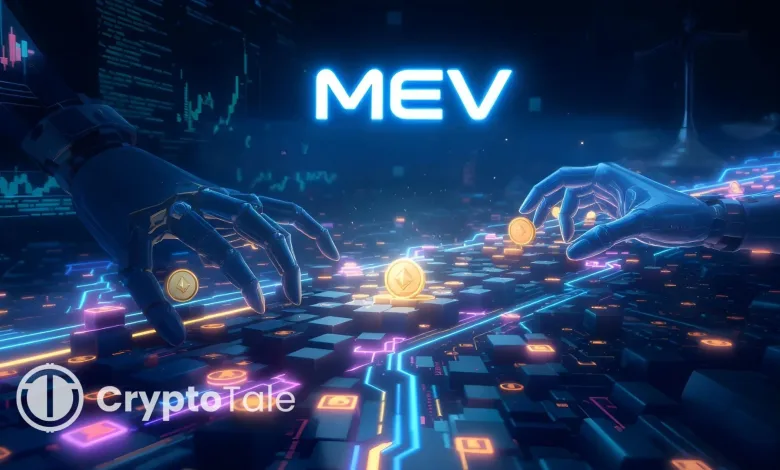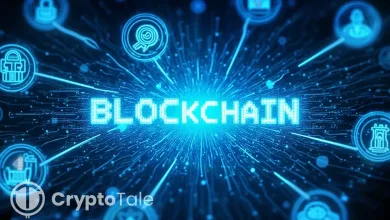A Beginner’s Guide to Maximum Extractable Value (MEV)

In recent years, the decentralized finance (DeFi) boom has attracted not just investors and developers but a new class of specialized actors. These participants are seeking Maximum Extractable Value (MEV), the extra revenue gained by strategically controlling the order of blockchain transactions. This concept has evolved from a technical curiosity into a focal point of research and regulation. Analysts warn that unchecked MEV practices can erode trust and fairness in blockchain markets, while proponents argue that efficient MEV extraction can improve market alignment. A review of recent reports and studies shows why MEV matters and what it could mean for the future of digital finance.
Defining MEV: Transaction Ordering and Profit Extraction
Maximum Extractable Value is the maximum profit that blockchain miners or validators can earn by rearranging, including, or excluding transactions within a block. Without a central authority to enforce a first‑come‑first‑served rule, block producers have discretion over which transactions they include and in what order. This discretion, combined with the visibility of pending transactions in public “mempools,” allows specialized actors called “searchers” to identify profitable opportunities. These bots monitor mempools and submit their own transactions with higher fees to ensure they are processed first.
The term initially referred to “miner extractable value,” reflecting its early association with proof‑of‑work mining. As proof‑of‑stake networks gained prominence, the definition expanded to include validators and block builders. This shift recognizes that profit‑seeking block producers can insert, reorder, or censor transactions to capture arbitrage, take advantage of price slippage, or collect liquidation bonuses. Researchers at the European Securities and Markets Authority (ESMA) note that MEV is possible only because decentralized systems lack a precise and tamper‑proof transaction ordering mechanism.
MEV has become a significant phenomenon: for example, between the Ethereum Merge (Sep 2022) and mid-2024, an estimated 526,000 ETH (over $1.1 billion) of MEV was realized on Ethereum, indicating how substantial these profit opportunities have grown.
Related: What is Crypto Arbitrage Trading, and How Does it Work?
MEV Strategies and Related Terms
MEV encompasses a range of transaction-manipulation strategies in blockchain and DeFi. These often mirror concepts in traditional markets (e.g., arbitrage or front-running), but with a crypto twist. They are:
- Arbitrage MEV: Taking advantage of price discrepancies across markets or exchanges. In DeFi, arbitrage bots scan for price differences between DEXs (on-chain) or between a DEX and a centralized exchange (off-chain) and execute trades to profit from the gap. For example, a bot might buy an asset cheaply on one DEX and simultaneously sell it at a higher price on another. This activity can actually improve market efficiency by aligning prices across exchanges (similar to arbitrage in traditional finance). Still, the profit from on-chain arbitrage is a classic form of MEV.
- Frontrunning in blockchain involves observing a pending transaction in the public mempool and inserting one’s own transaction before it to profit from the expected price movement. This is typically done by paying higher gas fees to prioritize the frontrunner’s transaction. A displacement attack occurs when a frontrunner buys up a token ahead of a large purchase, driving up its price. A suppression attack involves flooding the network with high-fee transactions to delay a target trade. While frontrunning is illegal in traditional finance due to its exploitation of non-public information, in crypto, the public nature of the mempool allows insiders (validators or bots) to profit at the expense of regular users, raising concerns over fairness.
- Backrunning is the counterpart to frontrunning – placing a transaction immediately after a target transaction to capitalize on the price movement that the target caused. By itself, backrunning might refer to chasing the remnants of an arbitrage opportunity after a large trade. In practice, it most commonly appears as part of a sandwich attack, where the attacker’s second transaction comes right after the victim’s trade to extract profits from the price rebound.
- Sandwich Attacks involve an attacker placing their transactions before and after a victim’s trade to profit from price fluctuations. The attacker buys an asset before the victim’s purchase, driving the price up, then the victim buys at the higher price. Afterward, the attacker sells the asset, profiting from the price difference. This results in slippage for the victim, who gets a worse price. Sandwich attacks are common on decentralized exchanges (DEXs) and represent a predatory form of MEV-driven frontrunning.
Liquidation MEV, JIT Liquidity, and PGAs
Liquidation MEV occurs in DeFi lending platforms (e.g., Compound, Aave) when a borrower’s collateral falls below the required threshold. Searchers race to repay the loan and seize the collateral, earning a liquidation bonus. This process clears bad debt but extracts value from borrowers in distress.
Just-In-Time (JIT) Liquidity is a tactic used by bots to add liquidity to an AMM pool right before a large trade and remove it afterward. The bot captures a portion of the trading fees, sometimes manipulating price impacts in its favor.
Priority Gas Auctions (PGAs) once drove on-chain gas bidding wars, raising network costs. However, much of this competition has shifted into private MEV relay systems such as MEV-Boost, where searchers submit transaction bundles directly, reducing public gas wars.
Other terms like Time-bandit attacks refer to miners/validators reorganizing blocks to capture past MEV opportunities, which could destabilize consensus if left unchecked. Additionally, Sequencer Extractable Value (SEV) is the L2 equivalent of MEV, where rollup sequencers profit by controlling transaction ordering.
MEV Infrastructure and Actors: A Brief Overview
Over time, an MEV ecosystem has developed, with key actors and infrastructure elements designed to extract or mitigate MEV systematically.
- MEV Searchers: Independent bots or traders scan the blockchain’s mempool for profitable opportunities like arbitrage or sandwich attacks. They compete for MEV by submitting transaction bundles to miners/validators through private channels with sealed bids, reducing wasteful gas wars.
- Miners/Validators: These block producers control transaction inclusion. In PoW networks, miners handled the MEV, while in PoS networks, validators take charge. Validators profit from including MEV-paying transactions via systems like MEV-Boost, which has greatly increased their block rewards.
- Flashbots: Flashbots, a key MEV infrastructure organization, created the MEV-Boost system, where searchers send bundles to miners privately, bypassing public mempools. This system helps reduce gas wars and standardizes MEV extraction.
- Block Builders: Specialized entities construct blocks that maximize MEV by ordering transactions in profitable ways. Builders compete to offer the highest bid to validators, which has led to concerns about centralization as a few builders dominate the market.
- MEV Relays: Relays serve as intermediaries between block builders and validators. They forward the most profitable blocks to validators, ensuring efficiency and trust while preventing abuse and protecting validators from DOS attacks.
- Order Flow Providers: Entities like wallets or DEX aggregators can route transactions through private channels to capture MEV on behalf of users, reducing the likelihood of being targeted by public bots.
Proposer-Builder Separation and MEV Mitigation Technologies
Proposer-Builder Separation (PBS) aims to reduce centralization by splitting the roles of block proposers (validators) and block builders. This allows anyone to build blocks, ensuring smaller validators can compete for MEV rewards by selecting the highest bid block. MEV-Boost, an off-chain solution developed by Flashbots, facilitates PBS by connecting validators with builder marketplaces. It has significantly increased validator rewards since Ethereum’s PoS shift, but relies on trust in relays.
Private Mempools aim to protect transactions from frontrunning by preventing public access to them until they’re mined. However, they introduce centralization and trust risks. Projects like Flashbots Protect and Eden Network are attempting to reduce these risks by offering private transaction routing, though some are still developing encryption-based solutions.
MEV Redistribution focuses on sharing profits with users. MEV-Share, introduced by Flashbots in 2023, allows users to receive a portion of MEV profits generated by their transactions. Similarly, Protected Order Flow Auctions are designed to prevent bots from exploiting users by auctioning transaction order flow to ensure fairness.
Concerns about censorship arose when Flashbots relays censored transactions related to Tornado Cash. To combat this, validators can use tools like MEV-Boost’s –min-bid flag to avoid censored blocks. Future developments might include cryptographic commit-reveal schemes in PBS to prevent censorship.
In 2025, MEV-Boost remains the leading solution for MEV mitigation, adopted by around 90% of Ethereum validators. Ongoing research is working to integrate these technologies deeper into blockchain protocols for fairer outcomes.
Cross-Chain and Cross-Domain MEV
Cross-chain MEV involves extracting value across multiple blockchains. For example, arbitrage between Uniswap on Ethereum and PancakeSwap on BNB Chain. This can be done by transferring assets through bridges or by maintaining capital on both chains. Bridge-based arbitrage has higher latency, while inventory-based arbitrage carries price risk. A 2024 study found 242,535 cross-chain trades worth $868.6M, with most trades executed using liquidity on the target chains. However, cross-chain MEV faces risks like non-atomic execution, where one leg of the trade might fail, leading to losses. Cross-domain MEV extends beyond arbitrage, involving scenarios like oracle updates or governance exploits across chains.
Layer-2 (L2) rollups also introduce MEV, often termed Sequencer Extractable Value (SEV). Rollups like Arbitrum and Optimism have centralized sequencers that extract MEV, but decentralization of these sequencers could introduce similar issues to L1 MEV. Cross-domain MEV is rapidly growing, with research aiming to create unified auction mechanisms for multiple chains.
Related: What is Cryptojacking? The Hidden Threat to Your Devices
Economic and Regulatory Implications of MEV
MEV has both positive and negative economic effects. Positive/neutral effects include market efficiency through arbitrage and liquidations. However, harmful MEV, like sandwich attacks, exploits users, resulting in slippage and higher fees without providing market value.
MEV Redistribution projects, such as MEV-Share, aim to give back value to users by sharing profits from MEV-extracting transactions. Additionally, Censorship Resistance is a concern, as seen during the Tornado Cash sanctions, when some relays censored certain transactions. This sparked debates over whether MEV infrastructure should enforce policies.
Regulatory concerns are growing, especially in Europe, where MEV is seen as undermining market fairness. While technical solutions like Flashbots aim to address inefficiencies, critics argue that they don’t fully eliminate exploitative practices. Legal scholars are exploring whether MEV tactics, such as frontrunning, could be classified as market manipulation or fraud.





